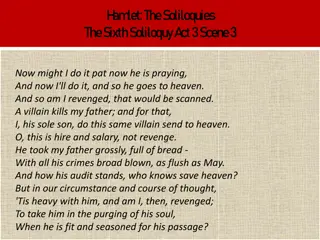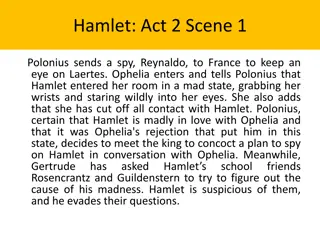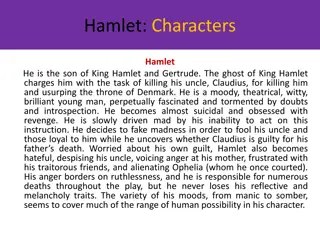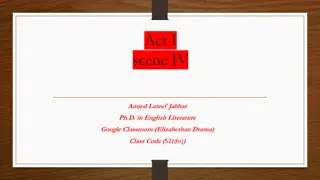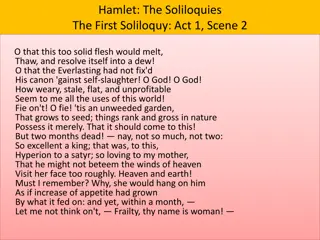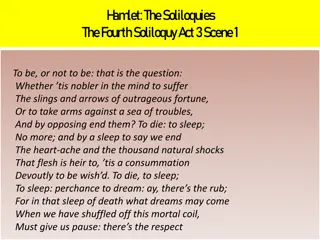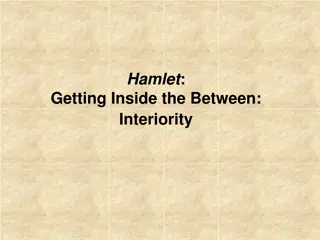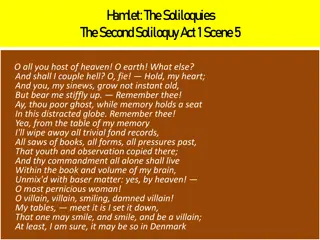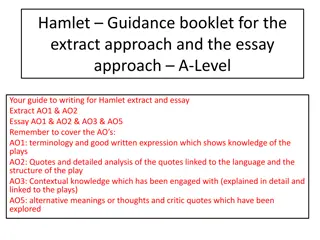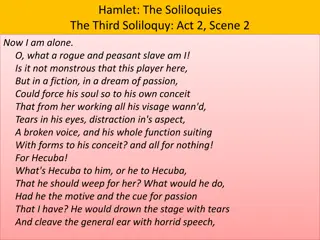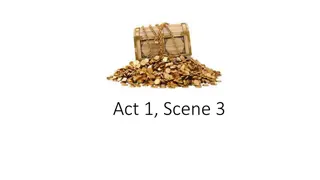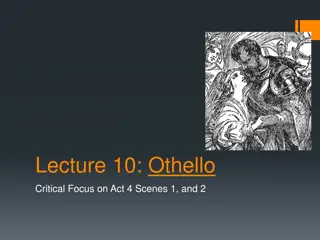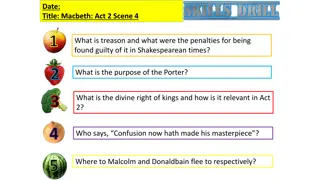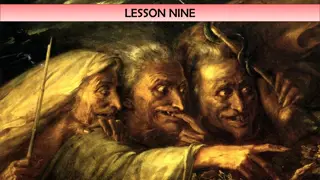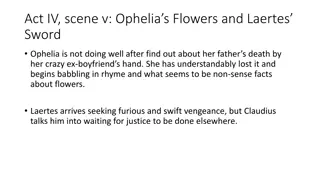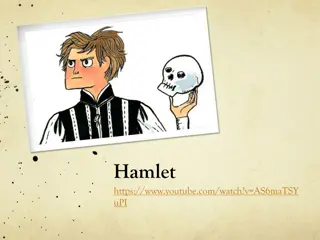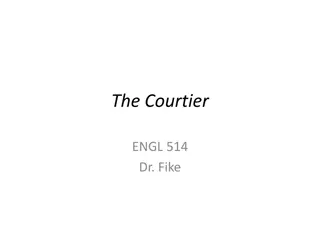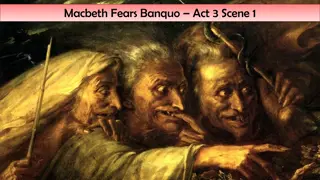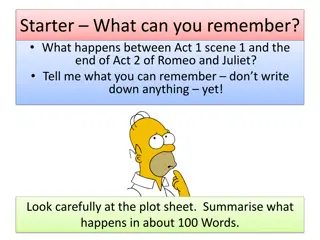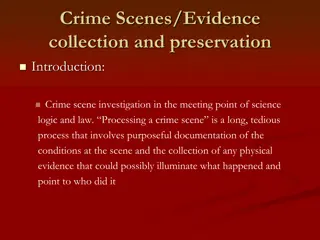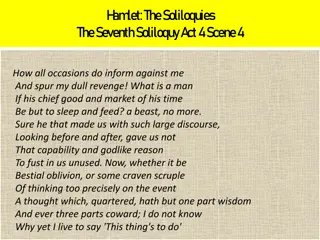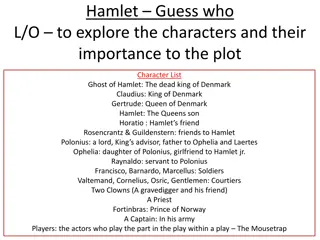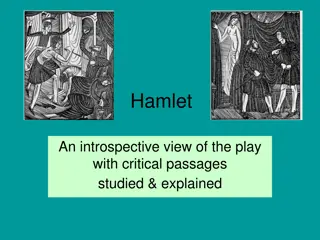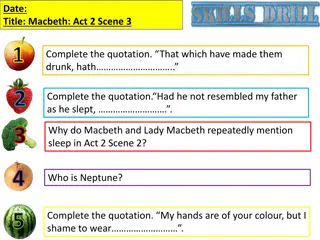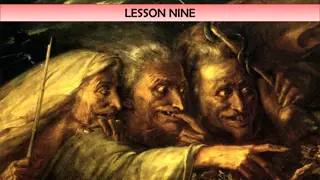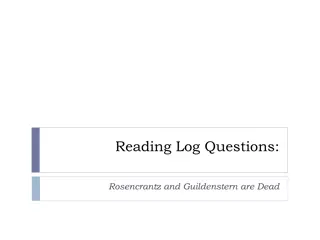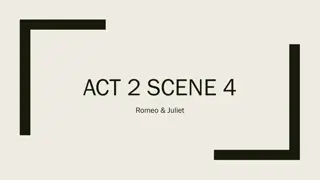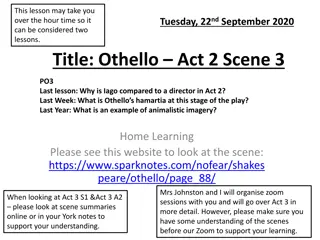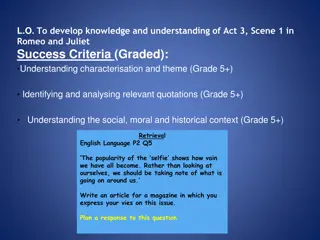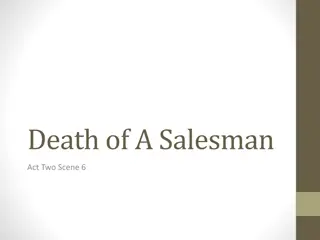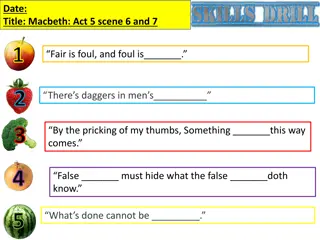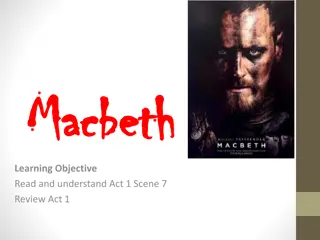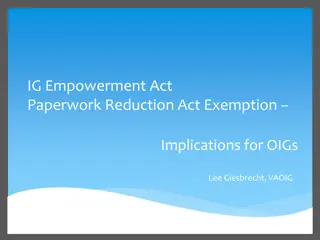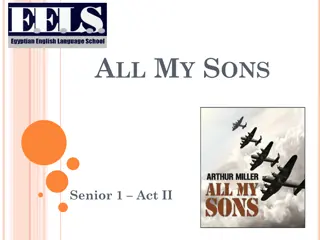Analysis of Act I, Scene II in Shakespeare's Hamlet
The scene delves into complex themes such as royalty, grief, revenge, and morality, focusing on Hamlet's internal struggles and interactions with other characters. It highlights Hamlet's melancholic nature, his relationships with his mother and deceased father, and introduces key questions surrounding King Claudius's actions. Through witty wordplay and dramatic soliloquies, the scene sets the stage for the unfolding drama in the play.
Download Presentation

Please find below an Image/Link to download the presentation.
The content on the website is provided AS IS for your information and personal use only. It may not be sold, licensed, or shared on other websites without obtaining consent from the author. Download presentation by click this link. If you encounter any issues during the download, it is possible that the publisher has removed the file from their server.
E N D
Presentation Transcript
Act I scene II Amjed Lateef Jabbar Amjed Lateef Jabbar Ph.D. in English Literature Ph.D. in English Literature
The Scene functions as an introduction to the play. It highlights the contrast between scene 1 and scene 2. It presents Fortinbras in terms of; kingdom, lost fathers, and revenge. the similarities between Hamlet and
This scene focuses on 3 questions: A: why is Claudius king, not Hamlet? B: how can Claudius mourn and smile at the same time? C: are Claudius and Gertrude guilty of incest and adultery?
Hamlets witty pun (line 67) I am too much in the sun which carries three possible meanings: son (3 times), sun (melancholy), and a very dedicated son to his father. At this stage in the play, Hamlet is hurt by and angry at his mother because he thinks that she shamed him and the memory of his father, so he is trying to shame her. Hamlet is poetic and idealistic in soul, thus he is now shocked (everything SEEMS), nothing is as he thought it to be.
First soliloquy in the play, line 254 (dramatic irony), it tells 3 things about Hamlet: 1. the extent of his disturbance even before the appearance of the ghost. 2. his fury and shock at his mother. 3. the crux of his melancholy (the world in chaos, all feels wrong).
Hamlet embodies all the features of melancholy: 1. he despises life. 2. he wishes he were dead. 3. he feels that he has no control over his own self nor his surroundings. To make it worse, he must be silent: he cannot change it, but cannot accept it.
this scene shows Hamlets enthusiasm and happiness for seeing Horatio (lord, sponsor?). The exchange between Hamlet and Horatio is an example of Stichomythia: It is the technique in which two actors deliver speech in alternating lines. It functions as: 1. emphasizing the significance of what is discussed, and, 2. the scene gains force and excitement from it.
As usual in Shakespearean drama, the scene ends in suspense.
Text specific remarks: 1. line 62, king says to Laertes Take thy fair hour, Laertes; time be thine, And thy best graces spend it at thy will. But now, my cousin Hamlet, and my son, ------ 2. line 65, Hamlet says an Aside? 3. line 140, a mythological allusion to Hyperion Vs. Satyr.
4. line 146, Hamlet says Frailty, thy name is woman. 5. line 149, a mythological allusion to Niobe. 6. line 153, a mythological allusion to Hercules. 7. lines 244-245, Hamlet s exaggerations (a man of words?).




